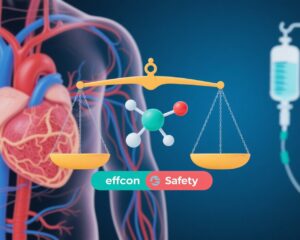Study Background and Disease Burden
Soil-transmitted helminths (STHs), including species such as Necator americanus, represent a major public health burden globally, particularly in sub-Saharan Africa, South Asia, and parts of Latin America. These parasitic infections affect over a billion people worldwide, mainly in low-resource settings with poor sanitation. Chronic infections can result in malnutrition, anemia, impaired cognitive development in children, and adverse pregnancy outcomes. Historically, control efforts have focused on school-based deworming programs targeting children, the population segment most vulnerable to morbidity. However, to achieve elimination of STH as a public health problem, it is hypothesized that interrupting transmission through community-wide treatment could be necessary. The DeWorm3 initiative was designed to test the feasibility of interrupting STH transmission through high-coverage, community-wide mass drug administration (MDA) with albendazole, administered biannually over three years, compared with standard school-based deworming, in endemic regions of Benin, India, and Malawi.
Study Design
The DeWorm3 trial is an open-label, community cluster-randomized controlled trial conducted in three countries representing diverse epidemiological and socioeconomic settings: Benin, India, and Malawi. Each country’s study site comprised a single governmental administrative unit with an estimated population of at least 80,000 individuals and established STH endemicity. The unit was subdivided into 40 clusters (each with at least 1,650 individuals), randomized at a 1:1 ratio to either community-wide MDA or school-based deworming.
Both study arms maintained routine deworming of preschool-aged and school-aged children in accordance with national guidelines for three years. Intervention clusters received additional biannual door-to-door community-wide administration of a single 400 mg oral albendazole dose for eligible individuals—children older than 12 months in India and Benin, and 24 months in Malawi, excluding pregnant women in the first trimester and individuals with contraindications or recent treatment. The primary endpoints were twofold: the individual-level prevalence of the predominant STH species and the interruption of transmission defined as cluster-level weighted prevalence of the predominant species ≤2%. Outcomes were assessed using quantitative polymerase chain reaction (qPCR) stool analysis 24 months after the final MDA round. Laboratory personnel were blinded to intervention status, and investigators remained blinded to post-baseline outcomes until data unmasking. Safety was monitored throughout the trial.
Key Findings
From October 2017 through February 2023, 120 clusters across the three countries encompassing 357,716 individuals were enrolled and randomized equally into intervention and control arms. The gender distribution was balanced: 51.4% female, 48.5% male, with negligible variance.
At the 24-month post-MDA assessment, stool specimens from 58,554 individuals in intervention clusters and 58,827 individuals in control clusters were analyzed. Necator americanus was the predominant species at all sites. Community-wide MDA yielded a significantly lower prevalence of N. americanus compared to school-based deworming alone, with adjusted prevalence ratios (aPRs) of 0.44 (95% CI 0.34–0.58) in Benin, 0.41 (0.32–0.52) in India, and 0.40 (0.34–0.46) in Malawi, demonstrating approximately 56–60% reduction in prevalence.
Regarding transmission interruption, defined as achieving ≤2% prevalence of the predominant species at the cluster level, results varied by geography. In Benin, 55% (11 of 20) intervention clusters achieved transmission interruption versus 30% (6 of 20) in controls, though this was not statistically significant (p=0.20). Only one intervention cluster achieved interruption in India, with none in controls (p=1.00), while no clusters met interruption criteria in Malawi in either group. These findings suggest focal success but limited feasibility of transmission interruption at the community level within three years of biannual MDA.
Safety analysis reported 984 adverse events among 487 participants, mostly mild. There were 32 serious adverse events resulting in hospitalization among 13 participants; three events were related to study procedures. No new safety signals emerged, supporting the favorable safety profile of albendazole in community-wide administration.
Expert Commentary
The DeWorm3 trial provides robust, large-scale randomized evidence on the comparative effectiveness and feasibility of community-wide versus school-based deworming programs. The substantial reduction in N. americanus prevalence with community-wide MDA supports its biological plausibility and shows promise for expanding deworming beyond school-aged children to interrupt transmission.
However, the inability to achieve consistent transmission interruption underscores several challenges. Environmental factors, reinfection dynamics, parasite biology including longevity and fecundity, and community behavior all influence the persistence of transmission. The trial’s three-year intervention period may be insufficient to sustainably break the transmission cycle, especially in high-transmission settings like Malawi.
From a programmatic perspective, community-wide MDA is resource-intensive, requiring door-to-door delivery and broader population engagement. The non-significant difference in transmission interruption rates, particularly in India and Malawi, highlights contextual heterogeneity in STH epidemiology and suggests the need for integrated interventions including sanitation improvements and health education.
These findings have implications for policy, reinforcing WHO recommendations that large-scale MDA programs be adapted to local transmission intensity and population structures. Community-wide approaches can improve equity by reaching vulnerable adults, potentially reducing community reservoirs of infection.
Limitations of the study include reliance on qPCR detection which, while sensitive, may detect low-intensity infections of unclear public health significance. The open-label design could introduce bias, though blinding of lab staff mitigated outcome assessment bias.
Conclusion
Interrupting soil-transmitted helminth transmission through community-wide mass drug administration with albendazole is biologically feasible in focal settings but remains programmatically challenging based on DeWorm3 findings. While community-wide MDA significantly reduces STH prevalence beyond school-based programs, achieving transmission interruption across diverse endemic areas requires more prolonged interventions and integrated control strategies.
Policymakers and global health stakeholders should consider incorporating community-wide MDA to enhance equity and reduce morbidity but temper expectations regarding rapid elimination within short timeframes. Future research is warranted to optimize intervention delivery, assess cost-effectiveness, and explore complementary measures such as water, sanitation, hygiene (WASH) improvements and behavior change campaigns.
References
Ajjampur SSR, Aruldas K, Ásbjörnsdóttir KH, et al. Feasibility of interrupting the transmission of soil-transmitted helminths: the DeWorm3 community cluster-randomised controlled trial in Benin, India, and Malawi. Lancet. 2025 Aug 2;406(10502):475-488. doi:10.1016/S0140-6736(25)00766-4. PMID: 40752908.
World Health Organization. Soil-transmitted helminth infections. Fact sheet. 2023. Available from: https://www.who.int/news-room/fact-sheets/detail/soil-transmitted-helminth-infections
Pullan RL, Freeman MC, Gething PW, et al. Global numbers of infection and disease burden of soil-transmitted helminth infections in 2010: a systematic review and modelling study. Lancet Infect Dis. 2014;14(5):435-444. doi:10.1016/S1473-3099(14)70042-0


